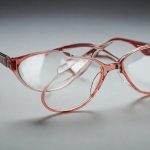For spray painting, the recommended respirator filter is the one that is rated for organic vapors and particulates. It is important to choose a filter that provides protection against both the chemicals in the paint and any dust or particles in the air.
When it comes to spray painting, safety is a first priority. Inhaling the fumes and particles released during the process can be harmful to your health. That’s why it’s important to wear a respirator with the appropriate filter, designed to provide safety protection against both organic vapors and airborne particles.
We will discuss the respiratory filters that are best suited for spray painting, ensuring that you can create your masterpieces while keeping yourself safe and healthy. So, today we will discuss what respirator filter you need to use for spray painting.
Should You Wear A Respirator For Spray Painting?
Wearing a respirator for spray painting is essential to protect yourself from harmful airborne particles. It is crucial to use the right respirator filter that can effectively block paint fumes and other hazardous substances.
Spray painting can be a fulfilling and creative endeavor, whether you’re renovating furniture or expressing your artistic side. However, it’s important to prioritize safety protection and protect yourself from potentially harmful spray painting chemicals and particles emitted during the process. Wearing a respirator for spray painting is crucial to safeguard your respiratory health.
Learn More: How To Tell If A Traffic Cone Has A Tracker
Why Is A Respirator Necessary For Spray Painting?
When spray painting, tiny particles and fumes are released into the air, which can easily be inhaled. These particles may contain hazardous substances like solvents, pigments, and other chemicals that can adversely affect your respiratory system. By wearing a respirator, you can minimize your exposure to these harmful substances and protect your lungs and airways safe from potential damage.
Here are a few reasons why wearing a respirator is necessary for spray painting:
- Protection against hazardous chemicals: Respirators equipped with appropriate filters can effectively block out fumes, vapors, and particulates. This 100 % sure that you are shielded from harmful paint chemicals, allowing you to work safely and with peace of mind.
- Prevention of respiratory issues: Prolonged exposure to paint fumes and particles can lead to various respiratory problems, including irritation, allergic reactions, or even long-term lung damage. Wearing a respirator acts as a barrier, reducing the risk of such health issues.
- Compliance with safety regulations: Many workplaces, such as professional painting sites, strictly enforce the use of respirators for spray painting to comply with safety regulations. Even if you’re doing DIY big home projects, it’s important to prioritize your safety by using a respirator.
Choosing The Right Respirator Filter For Spray Painting
Selecting the correct respirator filter ensures that you effectively remove harmful particles and chemicals from the air you breathe while spray painting. Here are a few considerations to guide you in finding the most suitable respirator filter:
- Particle size: Determine the size of particles you need protection against, as different filters are designed to handle specific particle sizes. Ensure the filter’s efficiency matches the size of the particles emitted during spray painting.
- Chemical type: Identify the chemicals present in the paint or spray you are using, as certain filters are specially formulated to target specific chemicals. Make sure the filter you choose can effectively filter out those particular substances.
- Filter type: There are various types of respirator filters available, including particulate filters, gas and vapor filters, combination filters, and HEPA filters. Understand the specific benefits and limitations of each filter type to determine which one is most suitable for your spray painting needs.
- Fit and compatibility: Consider the respirator’s design, ensuring it fits securely and comfortably on your face. Check compatibility with the respirator mask you plan to use, as some filters may only be compatible with specific models.
Remember that respirator filters have a limited lifespan and need to be replaced regularly. Follow the manufacturer’s guidelines for filter replacement to ensure continuous protection during spray painting.
By wearing a respirator and selecting the appropriate filter, you can work confidently and safely during your spray painting projects, protecting your respiratory health and enjoying your creative endeavors to the fullest.
Is A Respirator Suitable Mask For Spray Painting?
A respirator mask is essential for spray painting, ensuring protection from harmful fumes and particles. It’s important to use the appropriate filter designed specifically for spray painting worker to achieve the best results.
Spray painting is a task that requires caution and protection, especially when it comes to your respiratory health. Using a mask or respirator while spray painting can effectively guard you against harmful particles and fumes.
Read More: How Much Does A Traffic Cone Weigh
Why Choose A Respirator?
- Filtering Efficiency: Respirators are designed to filter out harmful particles and chemicals, ensuring that you breathe in clean air. They can effectively block both solid and liquid aerosol particles, providing you with adequate protection during spray painting tasks.
- Adjustable Fit: Respirators come with adjustable straps, allowing you to achieve a snug fit that seals out any contaminants. This enhances the effectiveness of the respirator mask and reduces the risk of worker exposure to hazardous materials.
- Comfortable Breathing: Unlike standard masks, respirators have exhalation valves that make breathing easier. These valves facilitate the exhalation of air, reducing heat and moisture build-up within the mask. This feature significantly enhances comfort during long periods of spray painting.
- Variety of Filter Options: Respirators offer a wide range of filter options, depending on the level of protection required. From basic particulate filters to chemical cartridges, you can choose the appropriate filter based on the specific spray painting job you’re undertaking.
- Reusability: Many respirators are designed to be reusable, which makes them cost-effective in the long run. The filters can be replaced when necessary, allowing you to use the same mask for multiple spray painting projects.
- Compliance with Safety Standards: Respirators are designed and manufactured in accordance with recognized safety standards. They undergo thorough testing to ensure their effectiveness in protecting against hazardous substances. Using a respirator for spray painting gives you peace of mind knowing that you are following established safety guidelines.
When it comes to spray painting, a respirator is a suitable mask that offers several advantages. Its filtering efficiency, adjustable fit, comfortable breathing, variety of filter options, reusability, and compliance with safety standards make it an ideal choice for protecting your respiratory health.
Invest in a reliable respirator to ensure a safer and more enjoyable spray painting experience.
How Do I Choose A Paint Respirator?
Choosing the right paint respirator requires considering the type of filter necessary for spray painting. Different filters offer varying protection levels against fumes and particles, so it’s important to select the appropriate one for your needs. Make sure to check the filter compatibility with your respirator before making a final decision.
So, when it comes to buying a paint respirator, there are some important factors to consider. To ensure you select the right respirator for spray painting, keep the following points in mind:
- Filter Efficiency: Look for a respirator with high filter efficiency to protect yourself from harmful particles and vapors. Efficiency ratings are typically displayed as percentages, with higher numbers indicating better filtration.
- Workplace Exposure: Consider the specific hazards present in your workplace, such as toxic fumes or fine particles. Different types of respirators are designed to provide safety protection against specific substances, so choose one that matches your needs.
- Filter Type: There are different types of filters available, each designed to address specific contaminants. Common filter types include particulate filters, organic vapor cartridges, and combination filters. Make sure to check the filter type that suits your painting requirements.
- Fit and Seal: An effective respirator should fit snugly on your face, forming a secure seal to prevent any harmful substances from entering. Look for adjustable straps or nose pieces that allow for a customized fit.
- Comfort and Durability: Since you may be wearing the respirator for extended periods, it’s essential to choose a comfortable and durable option. Consider factors like weight, high quality material, breathing resistance, and the availability of replacement parts for long-term use.
- Regulatory Standards: Ensure that the respirator you choose meets the necessary regulatory standards for safety. Look for certifications or markings such as NIOSH approval to ensure reliability and effectiveness.
Remember, the choice of a paint respirator can significantly impact your safety while spray painting.
Frequently Asked Questions Of What Respirator Filter For Spray Painting
What Filter Should I Use For Spray Painting?
The filter you should use for spray painting depends on the type of paint and the desired finish.
What Kind Of Respirator Filter For Painting?
The recommended respirator filter for painting is a particulate filter with an N95 rating.
Is A P100 Filter Good For Paint?
Yes, a P100 filter is good for paint as it provides excellent protection against airborne particles.
Can I Use An N95 Mask For Spray Painting?
No, N95 masks are not specifically designed for spray painting. Use a mask with appropriate filters instead.
In Final Words
To choose the right respirator filter for spray painting, it’s crucial to prioritize your safety and ensure the protection of your respiratory system. With the wide range of options available, understanding the different types of respirator filters and their capabilities is most important.
Particulate respirator filters are designed to capture solid particles like dust and smoke, while chemical filters protect against gases and vapors emitted by paint. It’s important to consider the specific contaminants you’ll encounter during your spray painting projects and select the appropriate filter accordingly.
Remember to check the filter’s rating, as higher ratings indicate a higher level of protection. Regular maintenance and proper replacement of filters are also essential to ensure maximum effectiveness. By choosing the right respirator filter for spray painting, you can safeguard your health and continue to pursue your passion for creating art through spray painting.
Stay safe!












